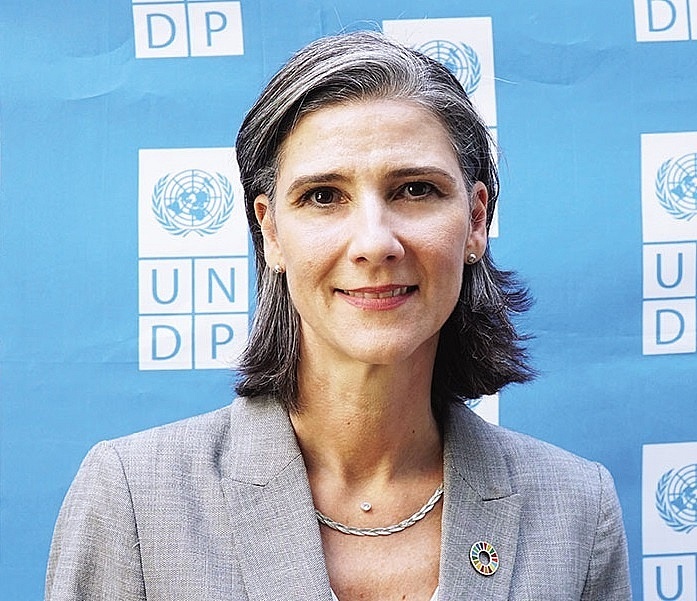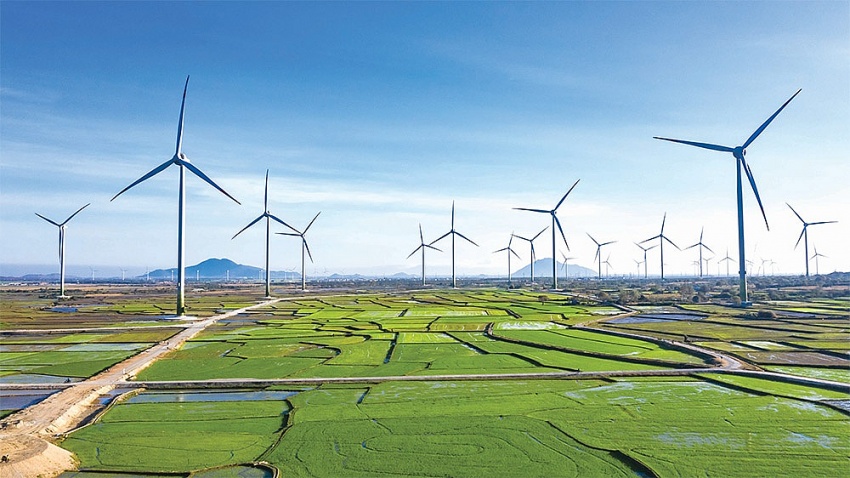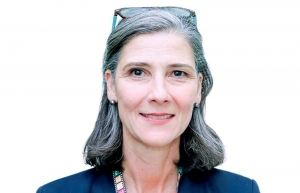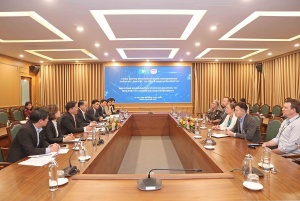The keys to a just energy and coal-fired transition
The JETP and the accompanying resource mobilisation plan identify priorities for the transition to renewable energy and the gradual phasing out of coal power in the electricity sector. By 2022, coal-fired power plants (CFPPs) accounted for 32.5 per cent in the Vietnam’s energy mix.
 |
| Ramla Khalidi, Resident representative United Nations Development Programme (UNDP) in Vietnam |
Vietnam’s eighth Power Development Plan (PDP8) also calls for the gradual transition of CFPPs to alternative forms of energy, which must be initiated in this decade and be fully operational no later than 2050. The PDP8 provides some conditions for the closure of old and inefficient CFPPs, including those in Ninh Binh and Pha Lai, that have been operating for over 40 years.
The PDP8 also provides an outlook to 2050 that includes the gradual introduction of biomass and green ammonia instead of coal; applications that could potentially be applied to other existing CFPPs. There are other technical ways of reducing emissions to zero, including the production and use of green hydrogen, but Vietnam has limited experience with them, and many of the necessary technologies are currently very expensive.
JETP partners are looking for ways to provide technical assistance, and to invest in the transition of coal power generation. The UNDP has recently partnered with the Institute of Energy (IoE) to undertake initial research on scenarios for phasing out CFPPs. The aim of the research is to inform the search for best solutions.
The UNDP and the IoE held a technical meeting in which initial options for conversion were presented by the IoE and discussed between owners of the power plants, potential financiers, and experts from various agencies. We addressed both technical and financial aspects and explored the complexity of plans to phase down or phase out coal.
The first challenge is around tech. Solar and wind power can be competitive with other forms of power, under certain conditions. Other technologies are mature and hold potential in Vietnam, but they remain expensive.
For example, battery energy storage, and other energy storage technologies, as well as offshore wind equipment are still relatively expensive and require large upfront capital. Green hydrogen and green ammonia can be produced, but they require vast amounts of solar and wind power, as well as expensive storage and transport facilities – making these gases very costly.
 |
| The keys to a just energy and coal-fired transition |
Biomass can substitute coal with limited additional investment in CFPP equipment, but it is more expensive than coal and there are questions about whether Vietnam can secure reliable supplies. Other technologies are still being researched and tested in different countries and have not been commercialised.
Secondly, conversion of CFPPs must happen without jeopardising energy security. But with electricity demand continuing to rise, so total electricity production must also keep pace. Therefore, conversion of CFPPs must be accompanied by substantial increases in renewable power production, power transmission, and energy storage throughout the country. Looking at the bigger picture of energy security and sustainability, energy efficiency remains an important factor in the equation.
The third challenge is finance. There is a need for investment to support project pipeline development. In-depth studies and plans must show how to make conversion technically and financially feasible, and proposals must become bankable in order to pull in private finance. One potential source of finance is from carbon markets, which essentially put a price on emissions and therefore converted CFPPs can get a source of revenue.
But financing will also require re-consideration of existing power purchase agreements and how CFPPs operate in the wholesale electricity market, which will not be straightforward. Some technical assistance and investment costs must be carried by IPG members and the government because banks and enterprises will not be willing to pay for those.
If well-designed, investments in new capacities can be made commercially viable and financed by international and national commercial banks: financing CFPP conversions requires smart financial structuring.
The fourth challenge relates to human resources and communities. Approximately 170,000 workers in Vietnam are dependent on coal power generation and coal mining. The government will need to put in place policies to support workers and local economies ahead of planned closures or transitions and facilitate alternative employment or social protection. Community consultations and dialogue will be important to ensure that the voices of those most vulnerable and most at risk are considered in the design of policies and programmes.
In future, detailed conversion plans must be prepared for many CFPPs, and discussed between CFPP owners and other stakeholders. The UNDP will continue to leverage its convener role to connect different stakeholders and partners in support of the energy transition.
At the same time, the government should develop a clear roadmap for CFPP conversion over the period to 2050. The road to the successful achievement of a just energy transition is one that requires a whole of government and whole of society approach, bolstered by the support and engagement of national and international partners and stakeholders.
 | Energy transition will not come without challenges To avoid catastrophic climate change and establish a trajectory that is compatible with the Paris Agreement, transformative changes to energy systems are urgently needed. |
 | MPI calls for high-tech, green energy cooperation from Washington investors Vietnam's Ministry of Planning and Investment (MPI) has welcomed a delegation from Washington to discuss investment opportunities and cooperation in high technology, semiconductors, and green energy. |
What the stars mean:
★ Poor ★ ★ Promising ★★★ Good ★★★★ Very good ★★★★★ Exceptional
Related Contents
Latest News
More News
- Vietnam’s forest carbon credits draw global interest (December 05, 2025 | 17:41)
- Coro Energy to launch BESS Pilot in Vietnam (December 04, 2025 | 15:12)
- Vietnam strengthens energy storage pathway (December 04, 2025 | 15:05)
- Women take leading role in agriculture and food systems (December 03, 2025 | 19:04)
- Experts highlight unpaid care work as key barrier to gender equality (December 03, 2025 | 15:15)
- Vietnam sets pace for dual transition in industry and trade (December 03, 2025 | 14:12)
- Harnessing technology for a sustainable future in Vietnam (December 03, 2025 | 12:17)
- Sustainability efforts on right track through policy and tech (December 03, 2025 | 12:05)
- Hanoi symposium highlights gender equality research and policy (December 03, 2025 | 12:00)
- The march to productivity and environmental sustainability (December 03, 2025 | 09:17)

 Tag:
Tag:






















 Mobile Version
Mobile Version